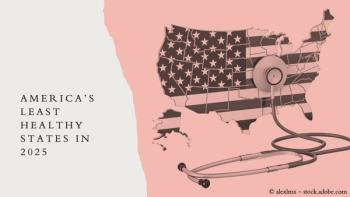
Making care transitions work as an outpatient-only physician
Fewer physicians are juggling outpatient and inpatient duties, yet the care coordination and transition processes are under greater scrutiny than ever. Here’s how to make them work.
Many primary care physicians used to make hospital rounds, overseeing their patients’ care after they were admitted. Now, however, the growing number of hospitalists means fewer providers are juggling outpatient and inpatient duties.
For office-based physicians, this paradigm shift in hospitalized care has heightened the importance of implementing processes that maintain continuity of care for their patients across different settings.
Poor transitions can cause patient dissatisfaction. Even worse, they may precipitate adverse events, such as exacerbation of chronic medical conditions. “Regardless of which particular next site of care where they’re transitioning, it creates the opportunity for patients to fall through the cracks,” says Christopher Kim, MD, MBA, associate professor of internal medicine at the
Primary care physicians can have a major role in preventing transition gaps for their hospitalized patients, Kim and Charles E. Coffey, MD, MS, noted in a 2014 American Family Physician editorial. “Although these steps may require additional time and resources in an already busy practice, they are critical to keeping patients safe and healthy at home after discharge,” the authors wrote in “
Keeping the lines of communication open
During a patient’s hospitalization, the lines of communication should remain open between hospital-based clinicians and primary care physicians. An electronic health record (EHR) system would serve as the ideal form of automated notification to a primary care practice when a patient is admitted, discharged or transferred. However, telephone calls, e-mails, text messages and facsimile also can help promote good communication, the authors say.
Related:
After a patient’s discharge, a primary care physician can have the greatest influence on continuity. When the physician or a staff member with clinical knowledge of the patient’s medical home environment makes contact within 24 to 72 hours, Kim and Coffey suggest that those team members may be ideally suited to address or adjust for any unresolved symptoms and self-care plans initially devised by the hospital team.
In addition, the caller should discuss medications with the patient, especially any changes or additions to the regimen, and help with scheduling and transportation needs for the follow-up visit. If necessary, arrangements should be made for other services, such as a visiting nurse or in-home physical therapy, if those have not yet addressed by the hospital-based providers.
The follow-up visit should include an assessment of the patient’s recovery and a review of the post-discharge care plan, as well as the medication regimen, including any modifications. Patient engagement techniques such as “teach back” can facilitate understanding of self-care plans. This visit also would be the time to discuss test results not available at discharge or subsequent screenings recommended during hospitalization, Kim and Coffey advise.
Preventing hospital readmission is a major goal of these preemptive measures, says Robert Wergin, MD, FAAFP, president of the
Wergin, who practices in Milford, Nebraska-a rural community with a 20-bed critical access hospital-still makes rounds regularly to see his patients when they are admitted. This helps with continuity.
Nonetheless, “many times the patients are confused” about which medicines to take afterward at home and how to adhere to the discharge treatment plan, he says. During a face-to-face conversation, he can set them straight. “I have found those visits to be very valuable,” Wergin says of the follow-up office appointment.
The shift to a hospitalist model
For patients accustomed to seeing their primary care physician on hospital rounds, the shift to a hospitalist model of care can be unnerving.
Ron Wyatt, MD, MHA, experienced this in 2007, when he transitioned from a solo primary care practice and seeing his own patients in the hospital to working as a hospital-employed physician with a largely outpatient practice in northern Alabama.
“Managing that relationship becomes a challenge,” says Wyatt, now medical director of healthcare improvement at
Office brochures and his staff informed patients that in the event of hospitalization, Wyatt would not manage their inpatient care. This notification helped manage expectations and avoid disappointment. As for new patients, some relocated from urban areas where the hospitalist trend had taken hold at a swifter pace. These patients and their family members were more prepared for the delineation between inpatient and outpatient care responsibilities among different providers, he says.
Communication gaps would continue to arise, however, between Wyatt and hospitalists, and between him and subspecialists. By the time some patients came for follow-up visits after hospitalization, he still hadn’t received their discharge summaries, which noted inpatient procedures, adverse reactions to medicines and other complications warranting continued oversight.
Related:
Sometimes it irked patients and family members that he hadn’t been informed about the specifics of their hospitalization, and they viewed this as a lack of concern about their well-being. To prevent such misperceptions, Wyatt often made courtesy calls to hospitalized patients without billing for those visits. “I’m not managing your care,” Wyatt would tell them. “But I just want to come by and say ‘hello.’ ”
Courtesy visits allow the primary care physician to stay in the loop of a patient’s care without being the main caregiver in the hospital. Those visits become more important when a patient is facing a life-threatening condition or serious illness such as a new cancer diagnosis.
“The primary care doctor would try their best to get in there and support them and their family, so they don’t feel isolated,” says Steven Kravet, MD, MBA, president of
Hospitals that follow best practices ask patients to identify primary care providers as part of the intake process. However, primary care physicians still rely largely on hospital-based teams for updates.
“The transition to doctors no longer taking care of their own patients in the hospital has necessitated developing relationships with the hospital-based providers and relying on technological and non-technological communication strategies,” says Kravet, who is also an associate professor at the
Another way to stay informed about your patients’ welfare is to express these concerns during their visits to your office. “We ask every patient who comes to see us if they’ve seen a specialist and if they have been hospitalized since the last time they saw us,” he says. “If we missed any of those episodes, it prompts us to look for the information. It may be a good opportunity to say, ‘If you do get hospitalized, make sure you give the team our contact information.’ ”
In the primary care group that Kravet oversees, patients have the option of participating in the
“It’s a very valuable use of technology because it provides a safety net,” Kravet says. Once the patient is released from the hospital, the primary care physician is alerted. Then the physician’s office contacts the patient within two days to reconcile the medication regimen and to schedule a follow-up appointment within seven to 14 days after hospital discharge.
Despite the increasing prevalence of EHRs, hospitalists depend on patients to recall which medications they’ve been taking. They may send a patient home on different medicines, based on an insurer’s inpatient formulary, which could vary from its outpatient formulary.
A patient may not recognize the subtle differences between generic and brand name pharmaceuticals, so there’s “a huge risk” that someone could end up “doubling-doing it,” says Theresa Rohr-Kirchgraber, MD, FACP, president of the
“Communication is so necessary between the inpatient and the outpatient world, and that’s one of the things that’s missing,” says Rohr-Kirchgraber, an associate professor of pediatrics and medicine. Often, the only way she knows that one of her patients has been admitted to the hospital is if the individual or a family member informs her.
Related:
“I am lucky if I find out,” she adds. “It really irritates me.” When Rohr-Kirchgraber becomes aware of a hospitalization, she calls the physician overseeing her patient’s care. She also sends the patient a get-well card that states that she knows about the hospital admission. Buying cards on sale and keeping them handy helps her get them out quickly.
‘Creating bridges’
Practicing in a small town, C. Todd Staub, MD, FACP, has “the good fortune” of seeing his primary care patients in the hospital and in the office, while also serving as director of nursing homes.
“It’s traditional and unusual to still find someone who does what I do,” says Staub, chairman of
His physician group believes in the principle of “creating bridges” between different care settings. For most primary care physicians, driving to the hospital and taking the elevator to gain access to their hospitalized patients isn’t a productive way of practicing medicine, says Staub, who serves on the board of directors of the American Medical Group Association, which represents large practices at the forefront of coordinating care between inpatient and outpatient arenas, nursing homes and home health.
“I’m kind of living both worlds now,” he adds, noting the varied responsibilities that “a diminishing number” of primary care physicians still undertake. “I think the divide between outpatient and inpatient medicine is here to stay, especially in more urban areas.”
Newsletter
Stay informed and empowered with Medical Economics enewsletter, delivering expert insights, financial strategies, practice management tips and technology trends — tailored for today’s physicians.








